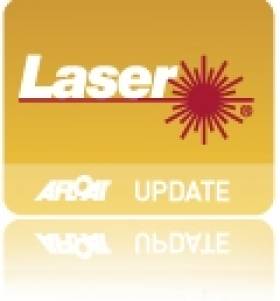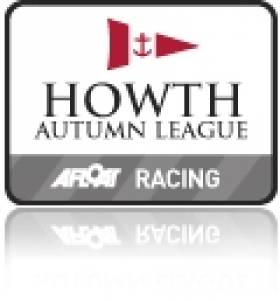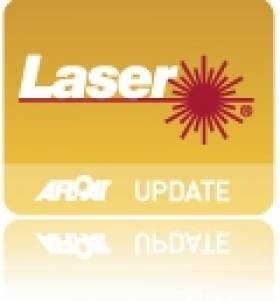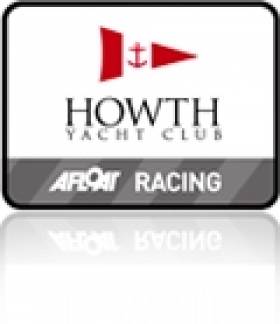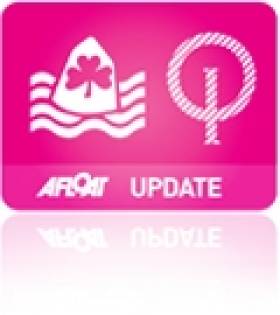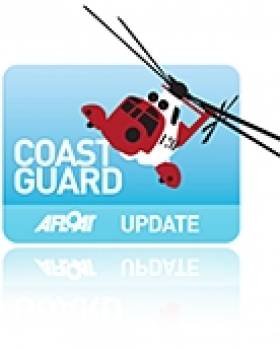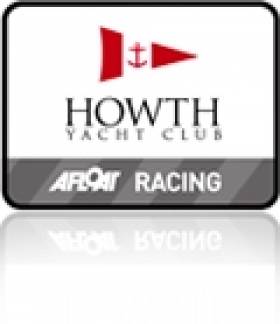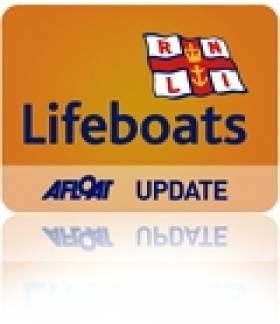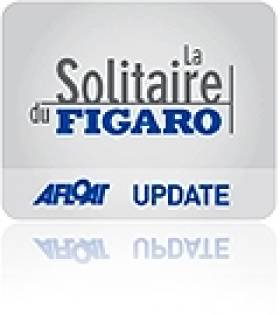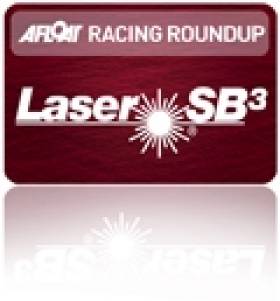Displaying items by tag: Howth
Greagsbey in Front at Howth Laser Frostbtes
Papillon First Home in Howth Brass Monkey Race
Cull Wins Howth Laser Opener
HOWTH YACHT CLUB. LASER FROSTBITE WINTER (O'ALL) 31/10/2010 LASER STANDARD: 1, Joe Cull HYC (2.00); 2, David Quinn HYC (6.00); 3, Evan Dolan NYC (6.00); LASER STANDARD APPRENTICE: 1, Brendan Costello MYC (2.00); 2, Conor Hopkins HYC (4.00); LASER STANDARD MASTER: 1, David Quinn HYC (4.00); 2, Evan Dolan NYC (4.00); 3, Conor Greagsber NYC (7.00); LASER STANDARD GRAND MASTER: 1, Joe Cull HYC (2.00); 2, Michael Evans HYC (6.00); 3, Robin Hegarty HYC (6.00); LASER RADIAL: 1, Darragh Peelo MYC (2.00); 2, Simon Revill HYC (4.00); 3, Ciaran Costello MYC (6.00)
Ten Good Reasons to Sail Lasers in Howth
1) This is the biggest series in Ireland, typically with over 50 entries
2) Howth welcome - great pre and post race social atmosphere in club.
3) Great Racing - Two short races per day, in open water just outside the harbour with committee boat starts. Great way to work on your helming and tactics over the winter.
4) Mix of competition - Sailors range from top 5 ranked sailors all the way through to beginners and casual racers. Ages range from 15-65.
5) Laser Round the Island and Lunch - A legendary, not to be missed end of season race, and party in March.
6) Great value - €4 per race, which covers the lunch in March also!
7) Free boat parking - entry fee also covers parking your boat in Howth the the full winter.
8) Dedicated race course - No other classes racing. Mix of windward leeward and triangle courses.
9) Full Rig, Radial and 4.7 fleets all supported
10) Friendly advice, guidance and help make it a great introduction to dinghy racing
Enter online at www.hyc.ie. For enquiries contact David Quinn 086 2835671
Donnelly Wins Dun Laoghaire End of Season Oppy Event
Helicopter Rescues Man Who Fell off Howth Head
A man who was critically injured when he fell 100ft off a cliff in Howth has been rescued by the Coastguard helicopter.
At 17.30 this evening Howth Coast Guard were requested by Gardai to assist with the search for a male last seen at Howth Summit car park. The unit's Volunteers assembled and began searching the cliffs along Howth Head, according to the Howth Coastguard website.
The Coast Guard Helicopter, Rescue 116, was also requested, according to Howth Coastguard.
Shortly before 18:00 one of the Coast Guard search teams sighted a male who appeared to have fallen 100 feet off the cliff path near the Bailey Lighthouse. The Coast Guard Cliff Rescue Team were deployed to set up a rope rescue and lower two Cliff Rescue Climbers; meanwhile Rescue 116 proceeded to lower a Paramedic winchman to the casualty. The three rescuers administered first aid while the helicopter prepared to lift the casualty. They were joined by personnel from the Howth RNLI inshore lifeboat.
The casualty was extracted frrom the cliffs and transferred by the Coast Guard helicopter to Tallaght hospital.
Storm Threat in HYC League
HOWTH YACHT CLUB AUTUMN LEAGUE (RACE 2) 26/09/2010 Class 1 IRC: 1, Storm P Kelly HYC; 2, Crazy Horse Chambers/Reilly HYC; 3, Equinox R McDonald HYC; Class 1 ECHO: 1, Storm P Kelly HYC; 2, Equinox R McDonald HYC; 3, Makutu Newman/Others HYC; Class 2 IRC: 1, Kinetic Colwell/Murphy HYC; 2, King One D Cullen HYC; 3, MiniMumm Cobbe/McDonald HYC; Class 2 ECHO: 1, Kinetic Colwell/Murphy HYC; 2, MiniMumm Cobbe/McDonald HYC; 3, King One D Cullen HYC; Class 3 IRC: 1, Alliance V Gaffney HYC; 2, Gecko K Darmody HYC; 3, Holly B MacMahon HYC; Class 3 ECHO: 1, Gecko K Darmody HYC; 2, Rossinver C Scott HYC; 3, Starlet E Bourke HYC; Class 4 ECHO: 1, On the Rox C & J Boyle HYC; 2, Flashback Hogg/Others HYC; 3, Bite the Bullet C Bermingham HYC; Class 4 IRC: 1, Flashback Hogg/Others HYC; 2, Bite the Bullet C Bermingham HYC; 3, Trinculo M Fleming HYC; Class 5 ECHO: 1, Demelza Ennis/Laudan HYC; 2, Voyager J Carton HYC; 3, Force Five R & J McAllister HYC; Class 5 IRC: 1, Voyager J Carton HYC; 2, Alphida H Byrne HYC; 3, Force Five R & J McAllister HYC; Puppeteer SCRATCH: 1, Harlequin Clarke/Egan HYC; 2, Yellow Peril N Murphy HYC; 3, Gold Dust Walls/Browne HYC; Puppeteer HPH: 1, Yellow Peril N Murphy HYC; 2, Ghosty Ned D Harkin HYC; 3, Harlequin Clarke/Egan HYC; Squib SCRATCH: 1, Kerfuffle Craig/Raune HYC; 2, Klipbok E Dalton HYC; 3, Shadowfax P Merry HYC; Squib HPH: 1, Kerfuffle Craig/Raune HYC; 2, Klipbok E Dalton HYC; 3, Shadowfax P Merry HYC; 17 Footer SCRATCH: 1, Aura I Malcolm HYC; 2, Rita Lynch/Curley HYC; 3, Deilginis Delginis Group HYC; 17 Footer HPH: 1, Aura I Malcolm HYC; 2, Deilginis Delginis Group HYC; 3, Rita Lynch/Curley HYC; Etchells SCRATCH: 1, Fuzzy Duck B O'Neill HYC; 2, Kootamundra O'Grady/Reilly HYC; 3, Northside Dragon J Bourke RStGYC; J 24 SCRATCH: 1, Jibberish O'Kelly/Others HYC; 2, Scandal B McDowell MYC; 3, Hard on Port F O'Driscoll RStGYC
Enniskillen and Baltimore Busiest Irish Lifeboats, Launching Five Times a Day in Summer
Preliminary figures* for summer 2010, issued today (22 September) by the Royal National Lifeboat Institution (RNLI), show the charity's Irish lifeboats launched on average five times every day during June, July and August.
RNLI lifeboats were requested to launch 450 times during June, July and August. The busiest station in Ireland was Enniskillen in Fermanagh with 29 launches followed by Baltimore in West Cork with 23 callouts. Fifty-four of those launches were in Dublin at lifeboat stations in Dun Laoghaire (22), Howth (20) and Skerries (12). Read more about the year's lifeboat rescues in 2010 HERE
The figures come on the back of a significant investment by the charity in the Irish lifeboat fleet. New inshore lifeboats have been put on service in Dun Laoghaire, Kilrush in Clare and Fenit in Kerry. These new lifeboats are fast, efficient and technically equipped to reach casualties faster and to provide increased cover around the coast.
Commenting on the RNLI summer lifeboat launches, RNLI Training Divisional Inspector, Owen Medland, said, 'It has been a busy Summer for Irish lifeboat crews. Over the course of those three months there have been a number of dramatic and challenging callouts for our volunteers. This summer RNLI Sea Safety volunteers have run a number of lifejacket clinics and flare demonstrations around the coast and at inland waterways to advise all water users on how to stay safe on the water.'
RNLI Operations Director, Michael Vlasto, added: 'The summer is always busy as more and more people opt to relax at the coast. The figures show that our volunteers are called on much more during this time and the fact they respond every time the pager goes off shows just how committed they are to saving lives at sea.
'Many of our lifeboat volunteers are also particularly busy at this time with their day jobs as many of them work in the tourism industry, so we are especially grateful to them in summer – and to their employers who allow them to stop work at the "bleep of a pager" to help others, and given the current economic climate for businesses this is a great contribution to the charity.'
Read more about the year's lifeboat rescues in 2010 HERE
Related Safety posts
RNLI Lifeboats in Ireland
Safety News
Rescue News from RNLI Lifeboats in Ireland
Coast Guard News from Ireland
Water Safety News from Ireland
Marine Casualty Investigation Board News
Marine Warnings
Dun Laoghaire to Host Top French Race in 2011
In a major announcement for Dun Laoghaire sailing a top French fixture involving 50 single handed yachts will visit the east coast port next Summer. Dun Laoghaire will be the only stop over outside France for next year's prestigious La Solitaire du Figaro race.
The race is regarded as one of the world's solo sailing great events and one of the toughest on the international sailing calendar.
Although having strong connections with Ireland this is the first time the 42 year old fixture will visit Ireland's largest sailing centre.
The fleet will moor in Dun Laoghaire harbour at the finish of the second leg and hosted by the National Yacht Club. They are expected to stay for a week.
This year the race visited Kinsale and in the past has also visited the Irish ports of Crosshaven, Howth and Dingle.
One month since the finish of the Solitaire du Figaro 2010, event organisers are already looking ahead, to 2011. The 42nd edition announces a new route: four legs, four French ports and one foreign stopover. The full details will be unveiled at the Paris Boat Show, on Friday December 3rd.
La Solitaire is going back to its roots. Perros-Guirec and Brittany from where the race will start on Sunday, 31st July 2011, are the most faithful of all host ports in the history of the race as Perros-Guirec has the record number of participations, this being the 16th time that the town will welcome the race. The last time was in 2005 and there is no doubt that Perros-Guirec will do its absolute best for this comeback.
The second French stopover in 2011 will be Caen, where the race will go back for the third time. The harbour and the village are ideally situated in the city centre and will surely gather thousands of visitors during the week long stay, with a full schedule of social events organised by the local municipality.
The third French rendez-vous is les Sables d'Olonne, which requires little introduction. In 2007, the port in the Vendée region celebrated the victory of Michel Desjoyeaux and since then the local authorities and the town live in very close ties to yachting, always ready to welcome sailors of all sorts, and namely from the Vendée Globe race... undoubtedly the people from Les Sables will show a very warm welcome to the skippers competing on the 42nd edition of La Solitaire next summer, as they have already done on six occasions on previous occasions as a host port for a race start or finish.
Dieppe will host the finish and close of La Solitaire du Figaro 2011 race. The Haute-Normandie region town expects to see the finish on a around August 24th. The town first hosted the race in 2009, regarded as a great success and one that the organisers wish to repeat by returning of for the finish. Locals in Dieppe will welcome the fleet over the final miles and will put on a whole host of celebrations through to Sunday 28th of August for the traditional final parade sail.
Just one stop over outside of France is planned and this is to be held in Ireland. La Solitaire will go to Dún Laoghaire for the first time, just ten minutes from the bustling town centre of Dublin at the finish of the second leg. The second stage promises to be a nice discovery for the Figaro sailors who will appreciate the charming Bay of Dublin and National Yacht Club's members warm welcome.
Perros-Guirec, Caen, Dún Laoghaire, Les Sables d'Olonne and Dieppe: five cities for a 42nd edition marked by many novelties. Sailing across the Channel, the Atlantic ocean, the Irish sea and the Celtic sea, the Solitaire du Figaro 2011 guarantees to be one of the season's greatest sports events.
Preparing for La Solitaire du Figaro here
Latest news for La Solitaire du Figaro hereFlannigan's Ulster Trio Take SB3 Title
The Royal Ulster YC crew of Gareth Flannigan/Brian Spence/Jeremy Tomlinson were the emphatic winners of the Investwise SB3 National Championship at Howth with a remarkable 17.5 points margin over runner-up 'Yeti' (Sean Craig/Stephen Boyle/Alan Green) of the Royal St.George YC, with early pacemaker 'Sharkbait' (Ben Duncan/Brian Moran/Ric Morris) of HYC a further two points adrift.
The northerners simply got better and better as the series unfolded. After a tentative start with an 8th and a 6th on day one, they strung together an impressive record of three bullets and three seconds, clearly revelling in the strong wind conditions over the weekend.
They arrived in Howth as the pre-event favourites on the back of top class performances at the four regional championships and did not disappoint. Overnight leaders going into the last day, they only had to steer clear of trouble and keep an eye on Craig and Duncan to be sure of overall victory.
Winning the penultimate race (just ahead of Craig and with Duncan back in 17th) effectively sealed the title but the last race threw up the highly unusual result in one-design racing of a tie for line honours with 'Bullet' (Trevor D'Arcy and crew from Carrickfergus), with Duncan salvaging a third after several average results.
Discarding an 8th was a clear indication of the Royal Ulster crew's dominance of the event and the pre-event predictions as to who would be the podium finishers was highly accurate. In addition to the top three, there were four other northern crews and four Dun Laoghaire boats in the top ten.
Duncan was the leading local boat in 3rd overall, although two other Howth crews 'Flying Saucers' (Emma McDonald) and 'Lia' (Dave Barry) filled 11th and 12th places respectively.
David Quinn of sponsors Investwise, who competed himself and finished mid-fleet, was delighted with the event which, with 49 entries, ranks as one of the biggest one-design class championships in the country. Organisation of the championship was headed up by Suzanne Carroll and her committee.
SB3 NATIONALS PHOTO GALLERY BY GARETH CRAIG HERE
SB3 NATIONALS PHOTO GALLERY BY BRIAN CARLIN HERE
Investwise SB3 National Championship – overall result:
1. McCreadys Gill Team (Flannigan/Spence/Tomlinson) RUYC 15.5 pts
2. Yeti (Craig/Boyle/Green) RStGYC 33 pts
3. Sharkbait (Duncan/Moran/Morris) 35 pts
4. Flutter (Algeo/Knatchbull/Haughton) RStGYC 47 pts
5. Bad (Hyde/Dowling/Dowling) RIYC 53 pts
6. Toucan 3 (Vaughan & crew) RNIYC 57 pts


























